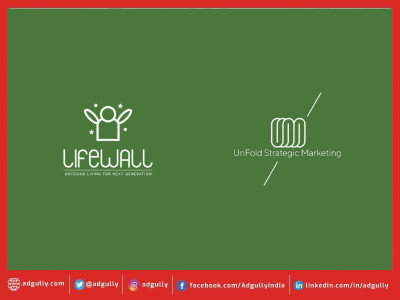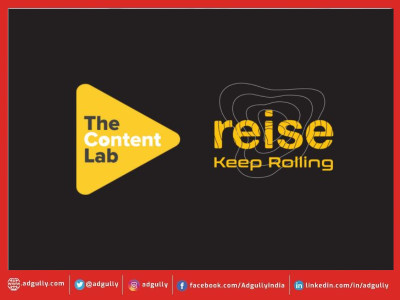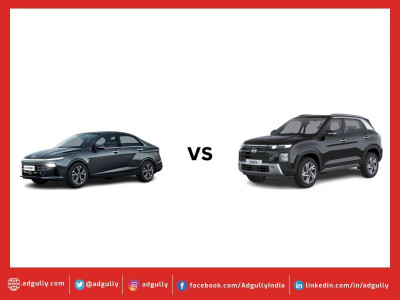What is NFT, Explained
How we value money is changing forever because of technology. Blockchain has completely changed how we understand currency, value money and has created a novel era of digital assets. Bitcoin is indeed the very early, successful, and notable use case for the concept of blockchain. Mr. Rahul, Avasthy, a Chicago based Entrepreneur, pens down an article to explain NFTs in the most simplest way
In 2021, NFTs (or "non-fungible tokens") surged in popularity
For instance, the graphic artist "Beeple" sold one NFT for a whopping USD 69 million. (See link)
Twitter CEO Jack Dorsey sold his first-ever tweet as an NFT for $2.9 mi
Image : Jack Dorsey’s tweet up for auction as an NFT
What does non-fungible" mean?
Let's start with understanding what is Fungible. If an asset, a good, or a thing is "fungible," it means anyone can exchange it for another identical item.
For instance, if I trade 100 dollar bill for another 100 dollar bill, I'm left with the same thing. Examples of fungible goods include dollar bills, any currency bills, shares/ stocks, Bitcoin, or any other coin.
In contrast, non-fungible goods cannot be exchanged for the same thing—why? Because they're unique. Mostly they are unique because of the emotional value attached to them. Examples of non-fungible products include real estate/land pieces and sports memorabilia like a signed bat of Sachin Tendulkar from the World Cup match. NBA (National Basketball Association) is selling moments of basketball games. You can look at it for free, or also you can buy it. It's non-replaceable. They are unique.
Let me explain a bit more.Imagine you want to buy shoes from Adidas. It is fungible. Assume Adidas makes a shoe model, thousands of them of the same model. You go to the website to buy a shoe, and Adidas can ship you any one of the shoes from thousands of shoes it manufactured.
But a specific shoe of Sachin Tendulkar worn in a game where he won the world cup is now not replaceable - it has an emotional value attached to it. It's one of its kind, and it's unique; it has a notable history attached to it. So it's about that specific shoe, not the model type or the number of shoes or where it was purchased. So that's Non - fungible, and Token means a digital asset.
Digital Asset = content stored digitally like music files, photos, images, Gif, video, Tweet, article, pdf, digital art, icons, and many more. Usually, the recommended size of the current (article published in Jan 2022) is less than 100 MB.
Point to remember: Non-fungible Token means digital assets which cannot be exchanged for the same thing because they are unique.
Where does NFT exist?
In understanding NFT or Non-fungible tokens, a point to remember is that they can only exist on the blockchain, think of blockchain like a shared digital ledger. So they live on the blockchain and represent unique identities of who owns it. Blockchain technology gave rise to cryptocurrencies like Bitcoin, which is fungible, supporting NFTs.
Most kinds of digital content can be made a digital asset (Digital Asset examples are Digital art, a photo that exists digitally (yes even your selfie), an edited image, music, gifs)— can be transformed into an NFT and assigned a unit of code. This code can act as verified proof of ownership on a blockchain (think of blockchains like a shared digital ledger owned by people, not by corporations or banks).
So NFT are a kind of digital Asset that can exist on the blockchain. Think of NFT like a digital container where you can store: graphics, art, document, music, a code of computer program, or any asset stored digitally. Once this Non-fungible Token or NFT is issued, it is no longer possible to change its information because blockchain makes it secured and un-hackable.
Point to remember: NFT resides on blockchain technology which is a shared digital ledger owned by people.
Can NFT be transferred?
Yes, NFT can be transferred, just like bitcoin, from one crypto wallet to another. This means any given time, the owner of the NFT can change. The ownership of the NFT is retained on the blockchain network and can be confirmed at any time publicly by anyone.
Think of NFTs as digital stamps, thappa, signatures, or autographs. For example, when you sign a cheque, only a bank can verify it, so your signature can only be verified by an expert to prove its legibility. In NFT, because it lives on a blockchain, a shared public ledger, anyone can verify its legitimacy, and you don't need an expert for that.
Like art, humans love to create value for things with no inherent value. Yet, people accept it as legitimate, and its value is assigned when proven that only you have it. For example, your net worth will increase if you own a unique piece of art by Picasso and it is proven that it is authentic and you have complete ownership of it.
When you buy a regular NFT on Ethereum, a coin on the blockchain (remember the shared ledger owned by the public), you buy the control over a unique identity - this identity is called a hash entry. Hash entry is just a string of combinations of alphabets and numbers that are linked to a file. That file is accessible to everyone with internet access so anyone can check and prove its authenticity. So anyone can verify without a court of law, legal contract, paperwork, government, bank, or a trademark agency.
Point to remember: The ownership can be transferred, and that transfer detail resides on blockchain - the secured shared digital owned by people, so anyone can validate the authenticity without the need of a contract or paperwork by government, bank, corporation, validating the transaction.
Is NFT just Hype?
Some experts warn that the NFT market is a bubble that will pop: when there's a ton of Hype around an emerging market, risk can be high. Hype without knowledge of the masses creates a bubble, especially when something is novel and exciting. There may be a downfall whenever there is Hype, and then a new way of doing it differently emerges. Like in 1990, people were like, "Oh, we can make money from the Internet. A dot com bubble burst followed this Hype in the late '90s, a new business model emerged for the Internet, people adapted, and even you know now, the power of what the Internet can do and enable. So eventually, after a hype and then a downfall, we adapt as a nature of human and business models we accept. This technology will stick around. Hype will fade out as new business models arrive and mass people understand how to use it, not just some experts.
Currently, purchasing an NFT gives a sense and feel of exclusivity with something important and of value. This is elevated as the name of the NFT buyer gets necessarily recorded in the blockchain forever. Currently, this is popular with collectors, art people, and fans of certain notable moments who want to be closer to the object of desire. It's more like collectibles currently.
Can I Copy someone else NFT?
Yes, anyone can copy and paste an NFT, but only one person can own the original, verified signature (artists generally retain the copyright of the image). So it's no copyright or trademark that requires the court, but copyrighted art can be sold as an NFT. So the creator can own the copyright or reproduction right, but the buyer owns the original ownership. Being on digital formate, they are Indivisible as they exist as a whole, like the Twitter founder's first tweet, easy to store, verify, identify and distinguish.
How can the money be made with NFT?
You can now sell anything which is a digital asset, even concert tickets or an image, music, video, gif, even your text posts like a tweet or facebooks/Instagram post. Worth = the value of money/currency humans are willing to pay for the respective Asset. Expensive NFT becomes worthless if no one wants to buy. It's like a smart digital contract that lives on the blockchain, which requires no middlemen, mediators, physical currency, or paperwork. This saves a lot of cost in a transaction as it requires almost mediator fees. This scarcity (because each NFT is unique) and authenticity (it can be verified publically without an expert) gives NFTs value, just as they do for the physical art of Picasso or MF Hussain.
Thus, NFTs "open the doors for valuable digital art and create opportunities for artists that never existed before. Earlier, you need to get an auctioneer now; you don't. You can publish your NFT on the Internet, and anyone can buy it via any cryptocurrency across the world.
Artists and investors can now easily buy, sell and own digital goods at scale without any middlemen or mediator who takes their commission. Further, NFTs allow creators to establish direct relationships with customers and create a loyal community online. NFTs are created and also stored on the blockchain, which means they can be traded seamlessly from wallet to wallet, with royalties paid every time they move.
Like amazon is a marketplace to buy or sell physical things, NFTs are typically sold on several leading marketplaces, including OpenSea, Nifty Gateway, and Mintable.
But here is a catch to purchase an NFT in a marketplace, you'll need to have cryptocurrency to spend (usually Ethererium, which is a Bitcoin rival).
You can sell NFT in simple 3 steps:
1) Buy some small ETH - Etherium, open a crypto wallet and fund it with ETH you have bought, this is required to cover the mining or computing fees involved in creating your NFT
2) Upload your NFT to a marketplace as mentioned above
3) Decide if you want to sell your NFT as a fixed price or via an auction in the market place - wait and collect your money (in crypto currency) - i recommend auction if you are beginning in this space
Example: I am thinking to make a NFT collage of 50+ paintings by my 5 year old daughter on dog vs cats.
You'll also need to set up a digital wallet to complete the transaction (but beware of fees)
Does it affect climate change?
Many experts note that NFTs may be warming the planet in the future because it takes immense energy to run the computers that support blockchain technology. So blockchain requires massive energy to run, and NFT exists on blockchain hence the correlation.
When an artist "creates" a new NFT, it adds to the blockchain through an energy-intensive computer networking process called "mining." In the future reliability of sustainable and renewable energy sources may help decrease the effect.
The creation of one NFT, on average, has the same carbon footprint as driving a standard gas-powered car 500 miles, according to the New York Times.
Still, I can say it's clear NFTs do mark a new frontier for artists.
DISCLAIMER: The views expressed are solely of the author and Adgully.com does not necessarily subscribe to it.


















Share
Facebook
YouTube
Tweet
Twitter
LinkedIn